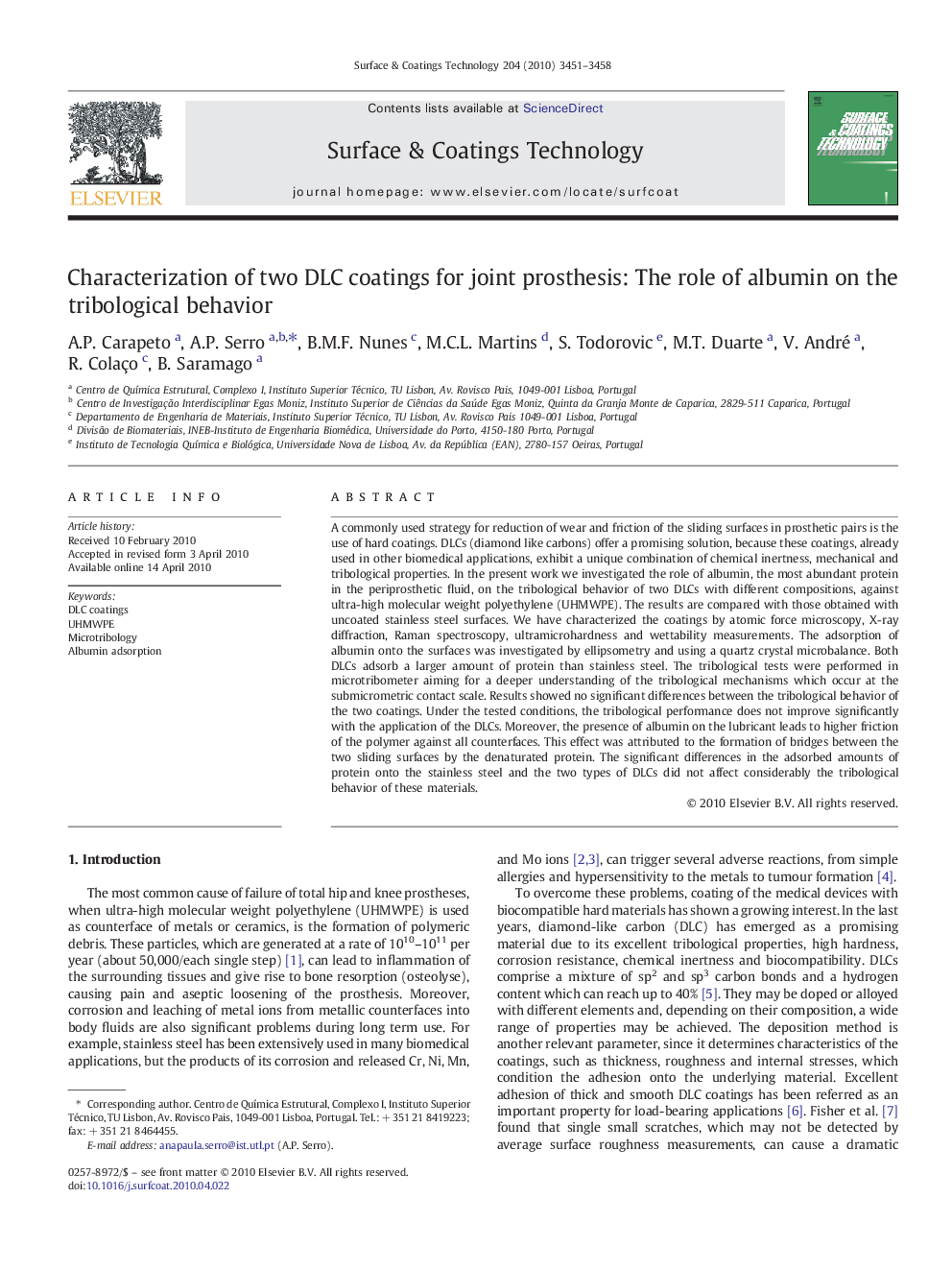| Article ID | Journal | Published Year | Pages | File Type |
|---|---|---|---|---|
| 1659140 | Surface and Coatings Technology | 2010 | 8 Pages |
Abstract
A commonly used strategy for reduction of wear and friction of the sliding surfaces in prosthetic pairs is the use of hard coatings. DLCs (diamond like carbons) offer a promising solution, because these coatings, already used in other biomedical applications, exhibit a unique combination of chemical inertness, mechanical and tribological properties. In the present work we investigated the role of albumin, the most abundant protein in the periprosthetic fluid, on the tribological behavior of two DLCs with different compositions, against ultra-high molecular weight polyethylene (UHMWPE). The results are compared with those obtained with uncoated stainless steel surfaces. We have characterized the coatings by atomic force microscopy, X-ray diffraction, Raman spectroscopy, ultramicrohardness and wettability measurements. The adsorption of albumin onto the surfaces was investigated by ellipsometry and using a quartz crystal microbalance. Both DLCs adsorb a larger amount of protein than stainless steel. The tribological tests were performed in microtribometer aiming for a deeper understanding of the tribological mechanisms which occur at the submicrometric contact scale. Results showed no significant differences between the tribological behavior of the two coatings. Under the tested conditions, the tribological performance does not improve significantly with the application of the DLCs. Moreover, the presence of albumin on the lubricant leads to higher friction of the polymer against all counterfaces. This effect was attributed to the formation of bridges between the two sliding surfaces by the denaturated protein. The significant differences in the adsorbed amounts of protein onto the stainless steel and the two types of DLCs did not affect considerably the tribological behavior of these materials.
Related Topics
Physical Sciences and Engineering
Materials Science
Nanotechnology
Authors
A.P. Carapeto, A.P. Serro, B.M.F. Nunes, M.C.L. Martins, S. Todorovic, M.T. Duarte, V. André, R. Colaço, B. Saramago,
